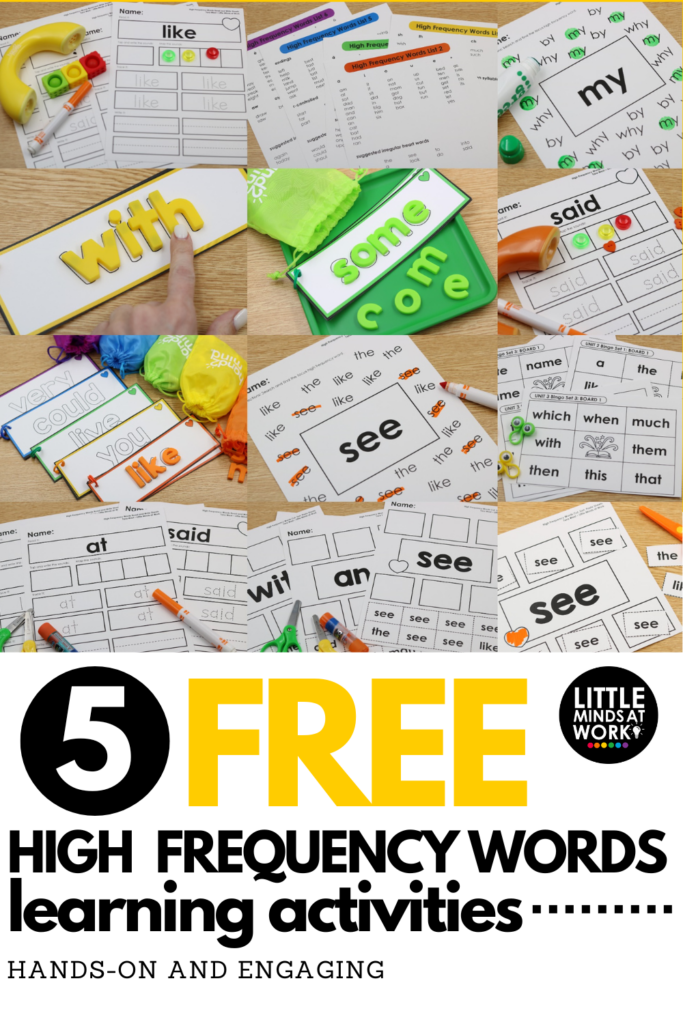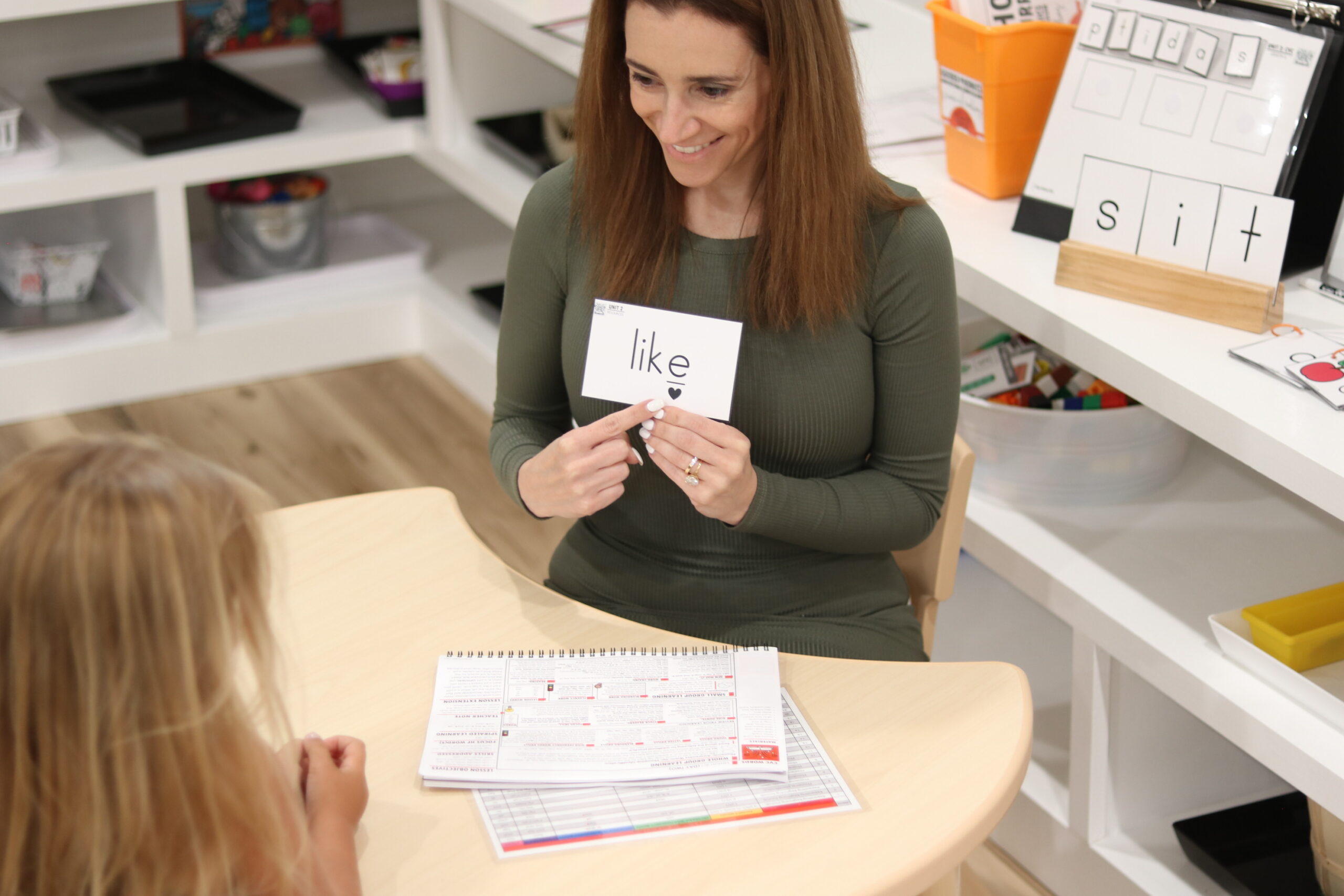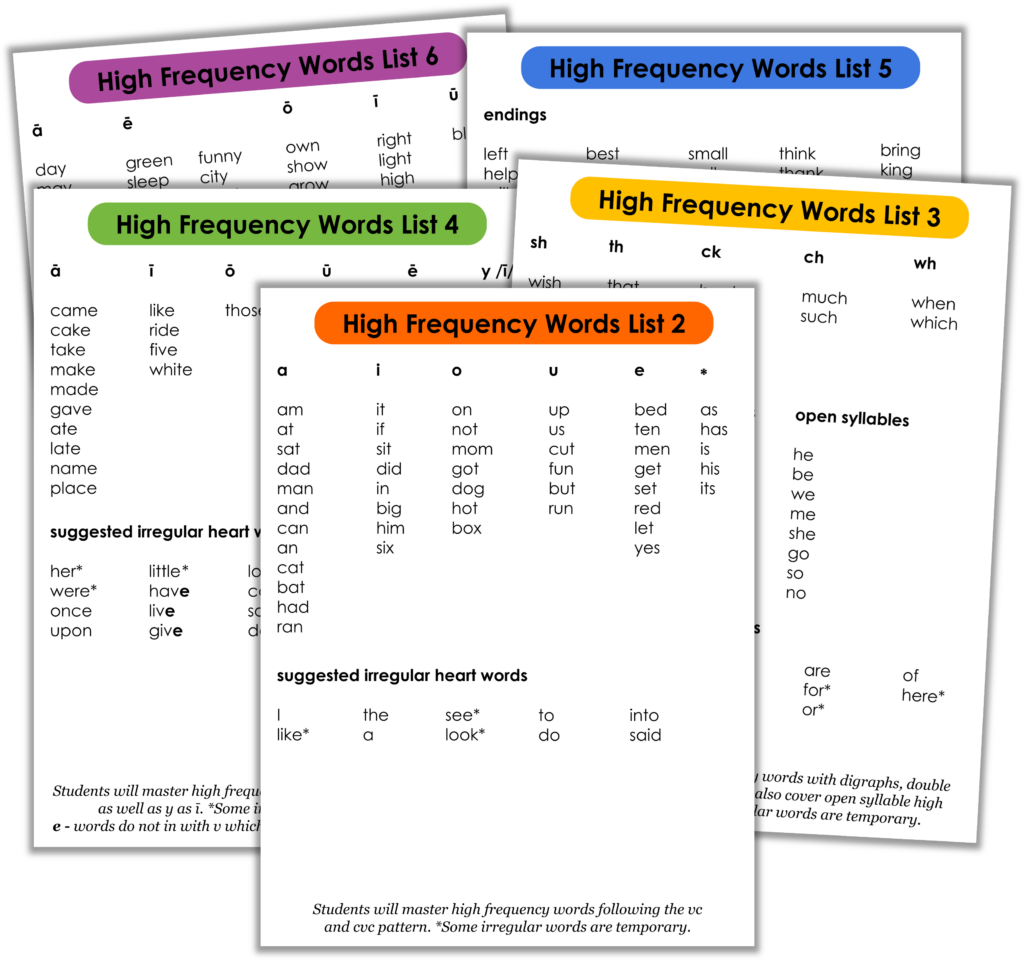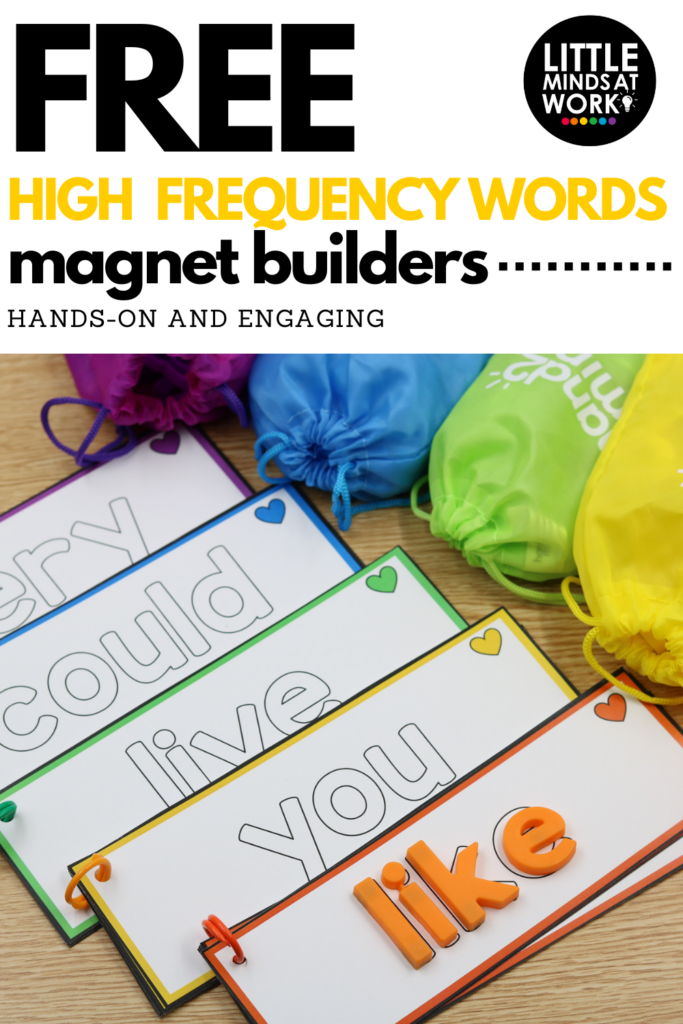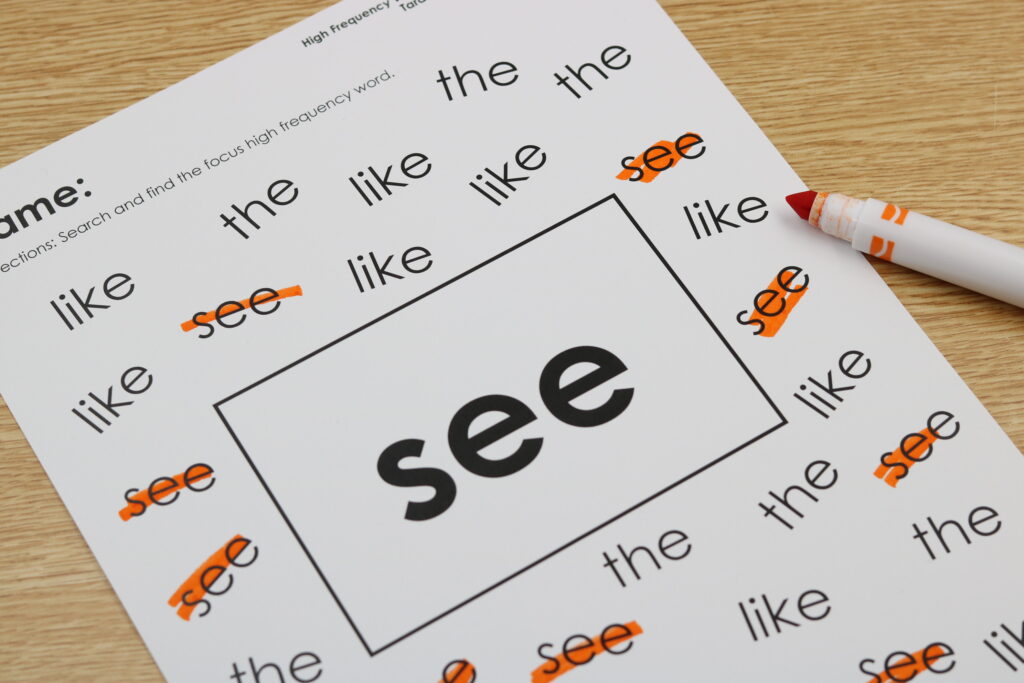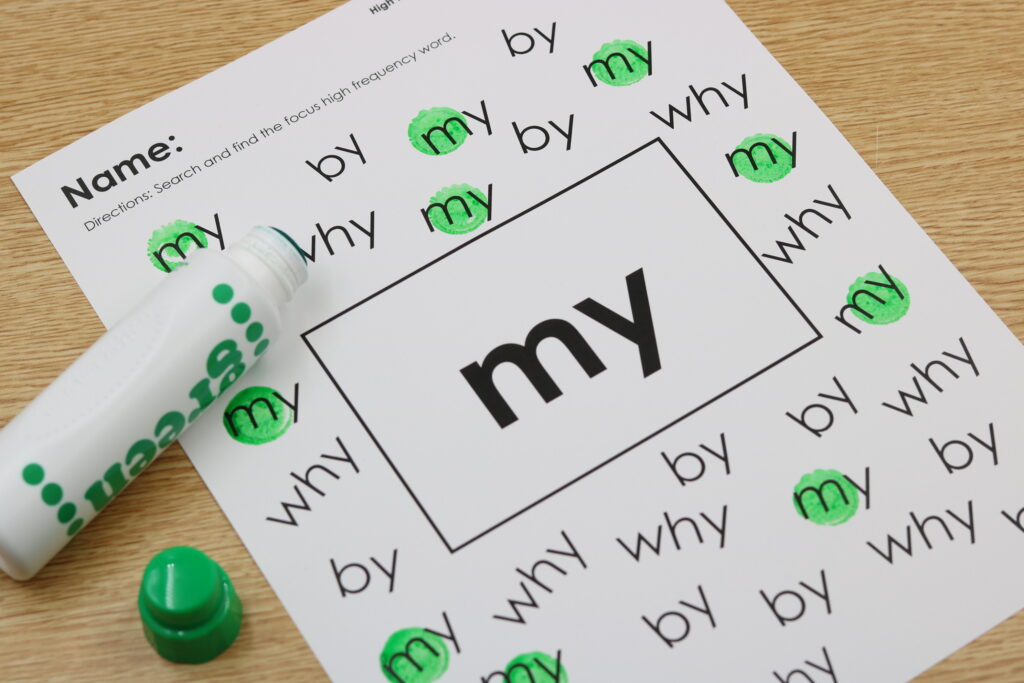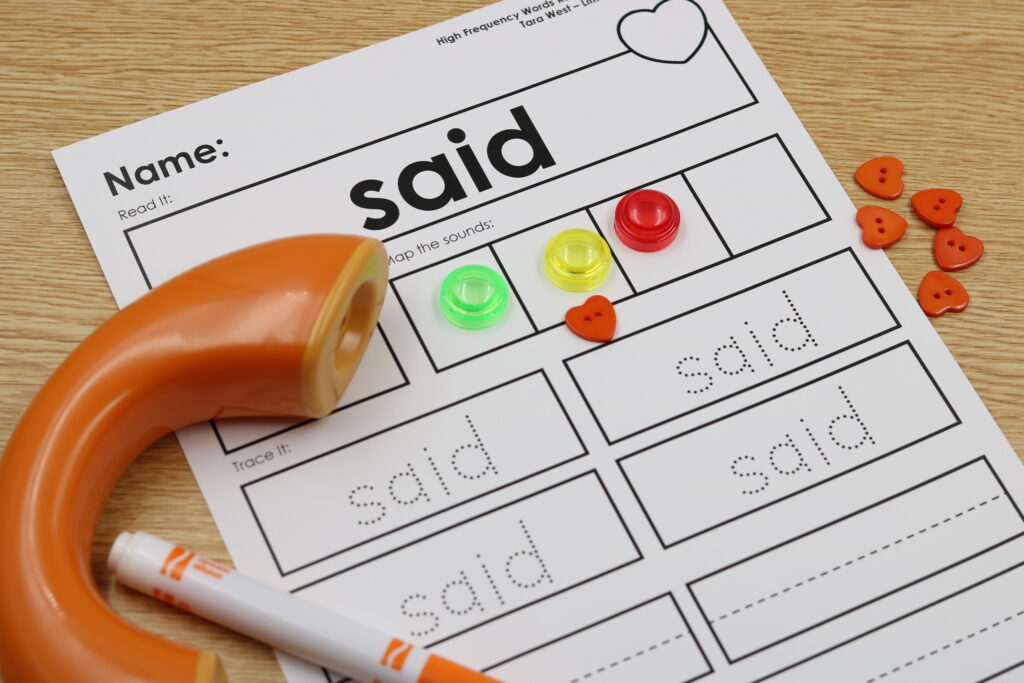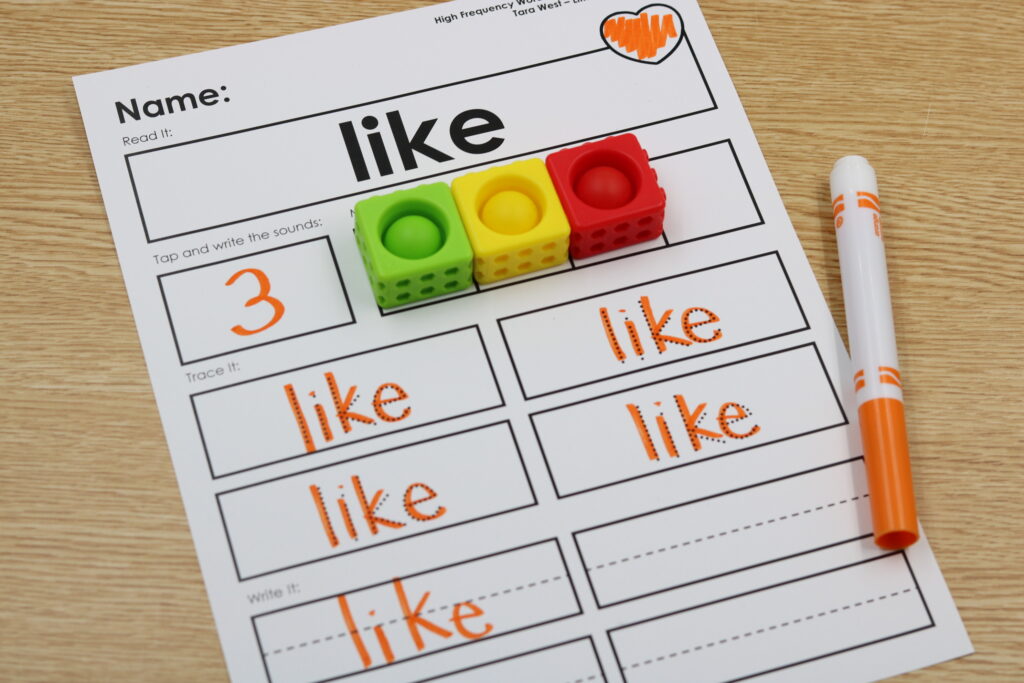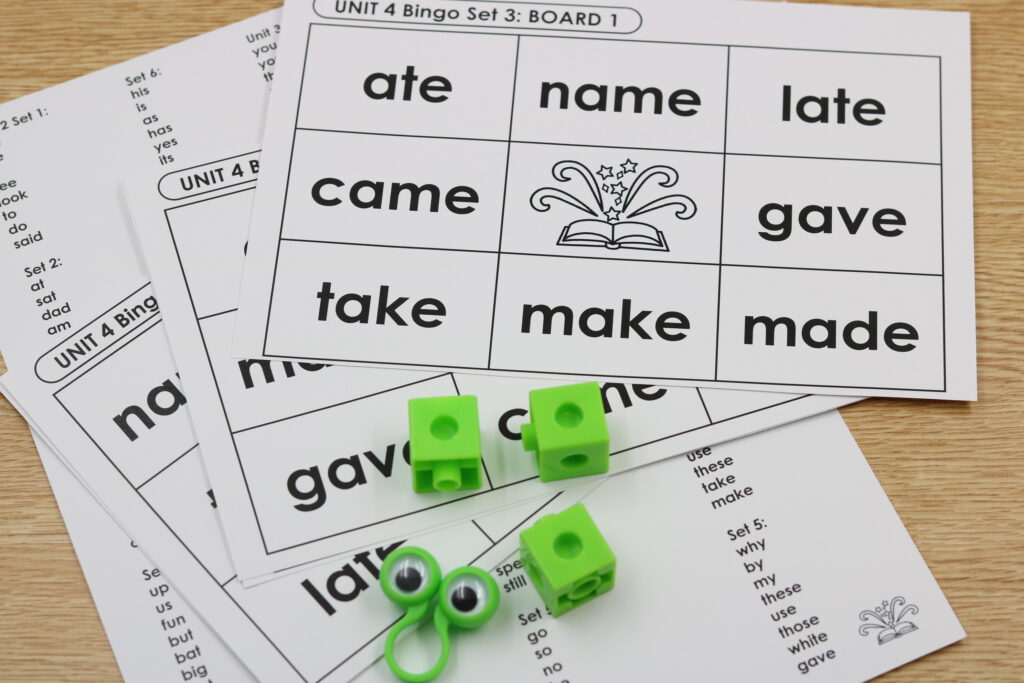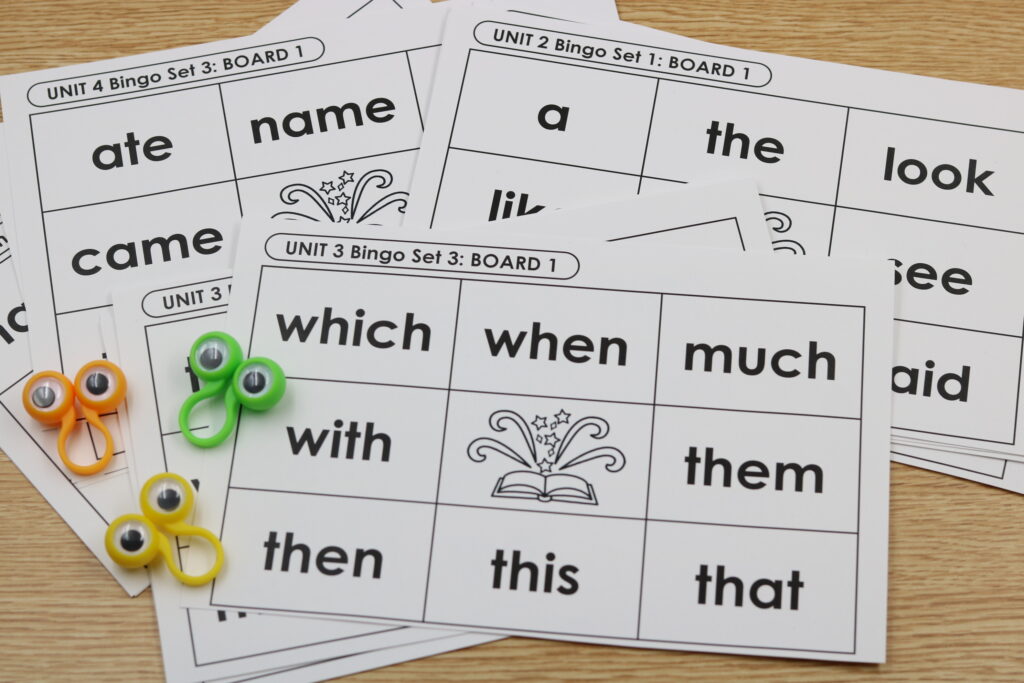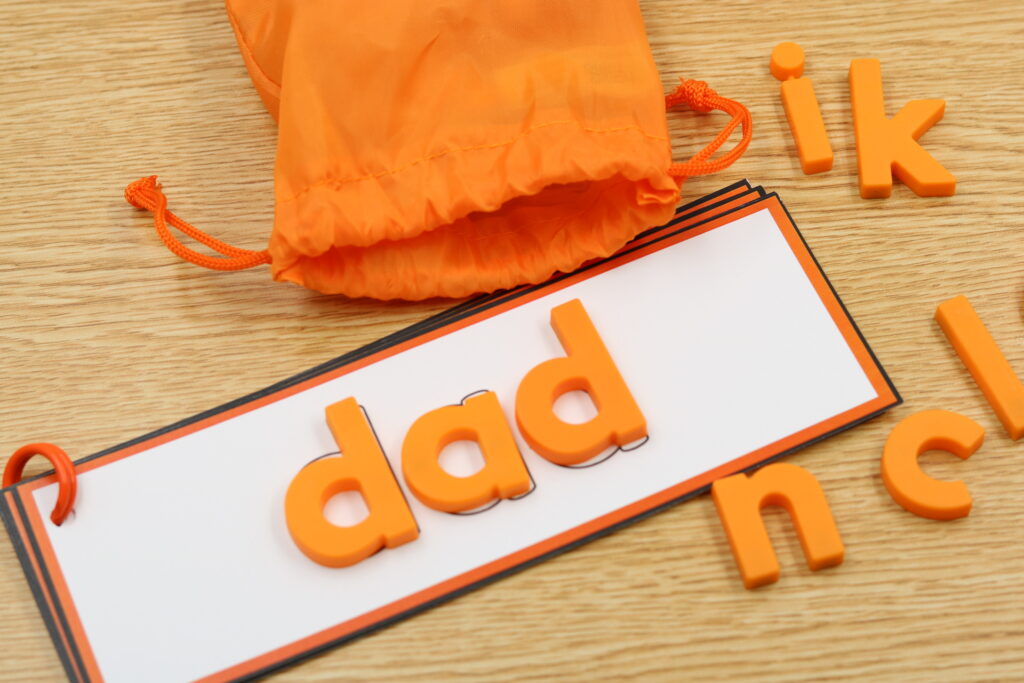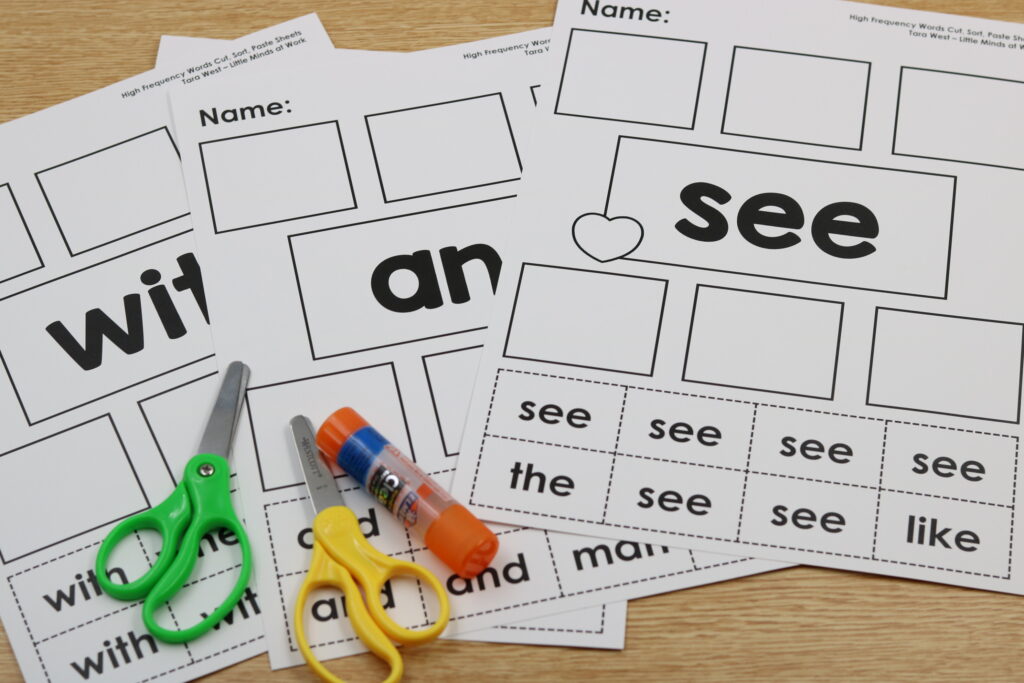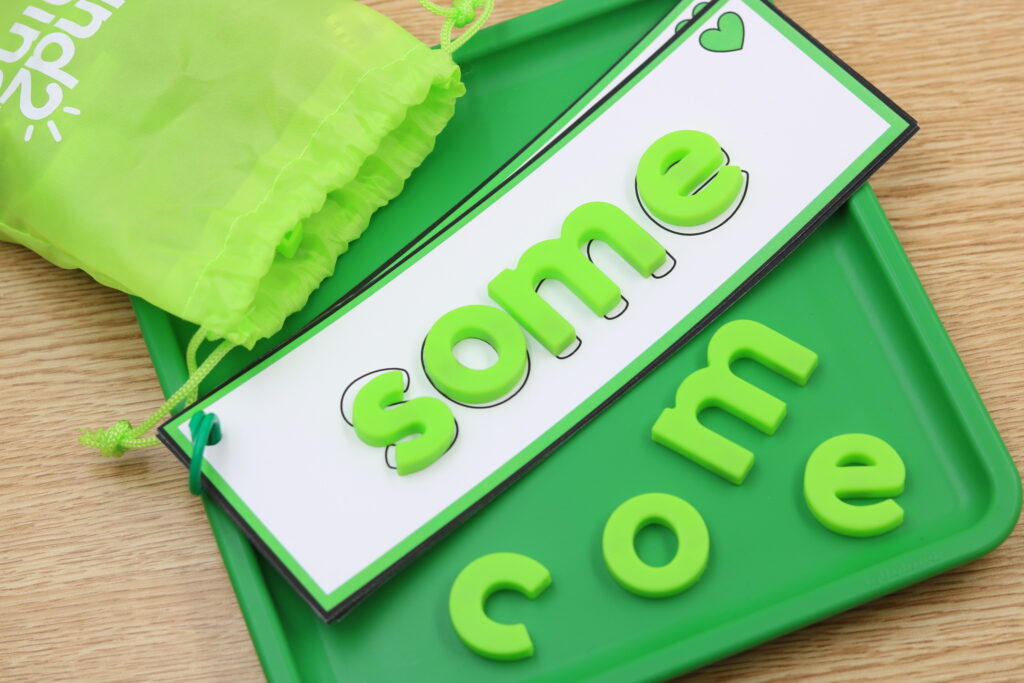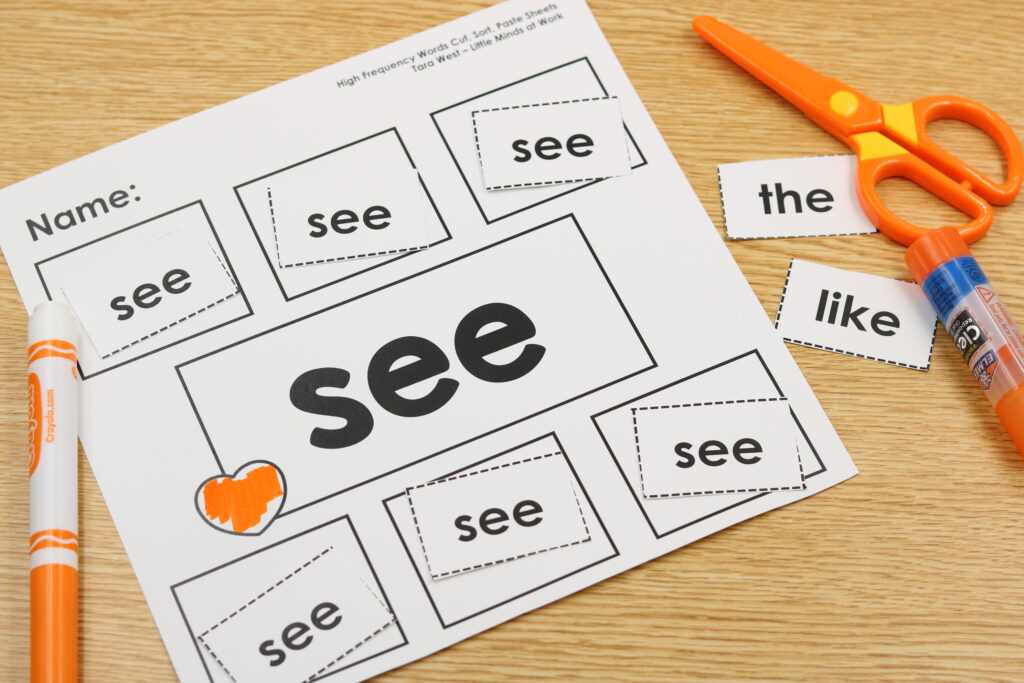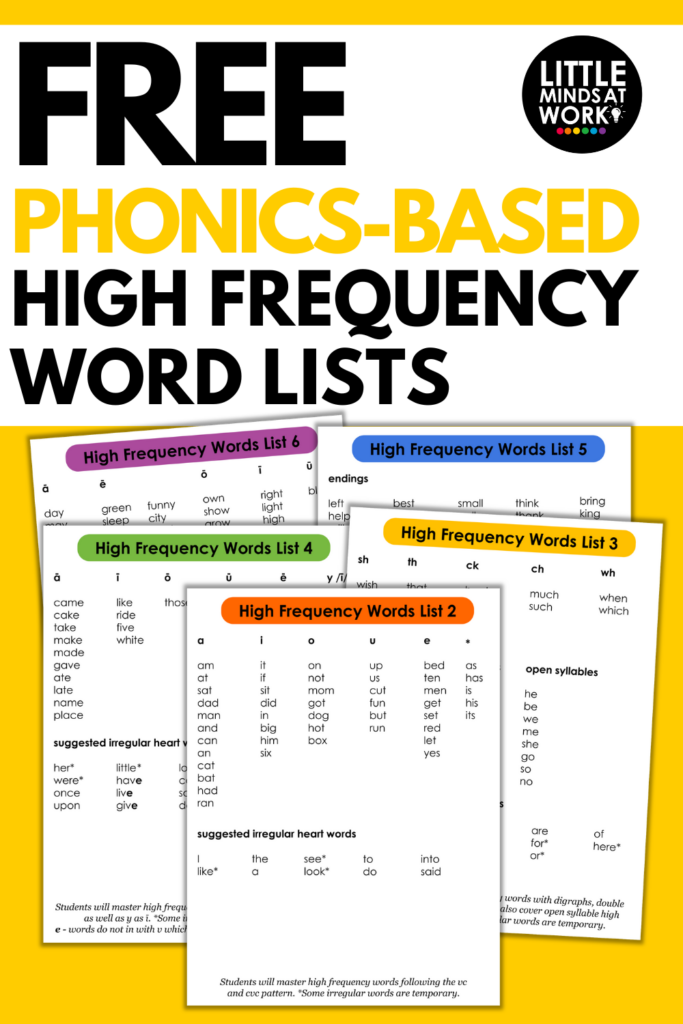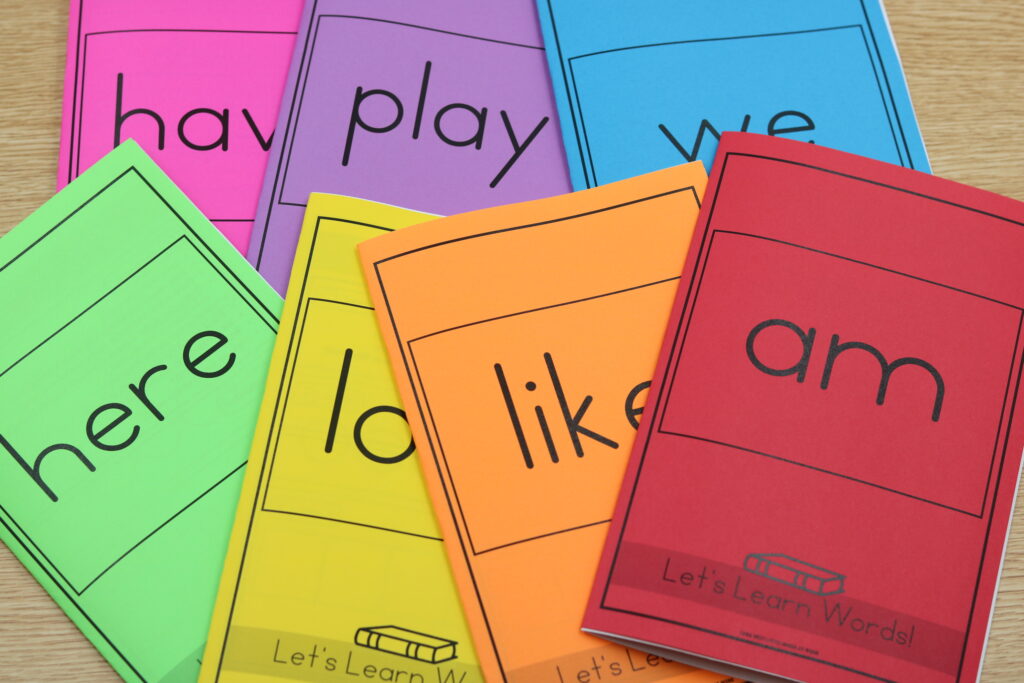High-Frequency Words for Early Literacy Success – Harness the Science of Reading with 5 Freebies
In the realm of literacy education, the science of reading has emerged as a guiding force, providing evidence-based insights into how individuals acquire and master the skill of reading. One key aspect of this approach is the emphasis on teaching high-frequency words, also known as sight words, within a structured curriculum. In this blog post, we’ll delve into the importance of integrating high-frequency words into a science of reading curriculum and how it contributes to building strong literacy foundations.
Read below to access a detailed explanation of word mapping, an example parent note for high frequency words, hands-on and engaging high frequency words activities, and more.

Access a free set of 260 high frequency word flashcards. These flashcards are aligned to the Guided Phonics + Beyond curriculum and match the color banding for quick access and storage. Use these flashcards for quick assessing or for instructional use. CLICK HERE TO DOWNLOAD.
Unlock the Power of Fluency: Dive into a complimentary resource featuring quick checklists for 260 skill-based high-frequency words, meticulously organized by their corresponding phonics skills and aligned to the Guided Phonics + Beyond high frequency word scope & sequence. CLICK HERE TO DOWNLOAD.
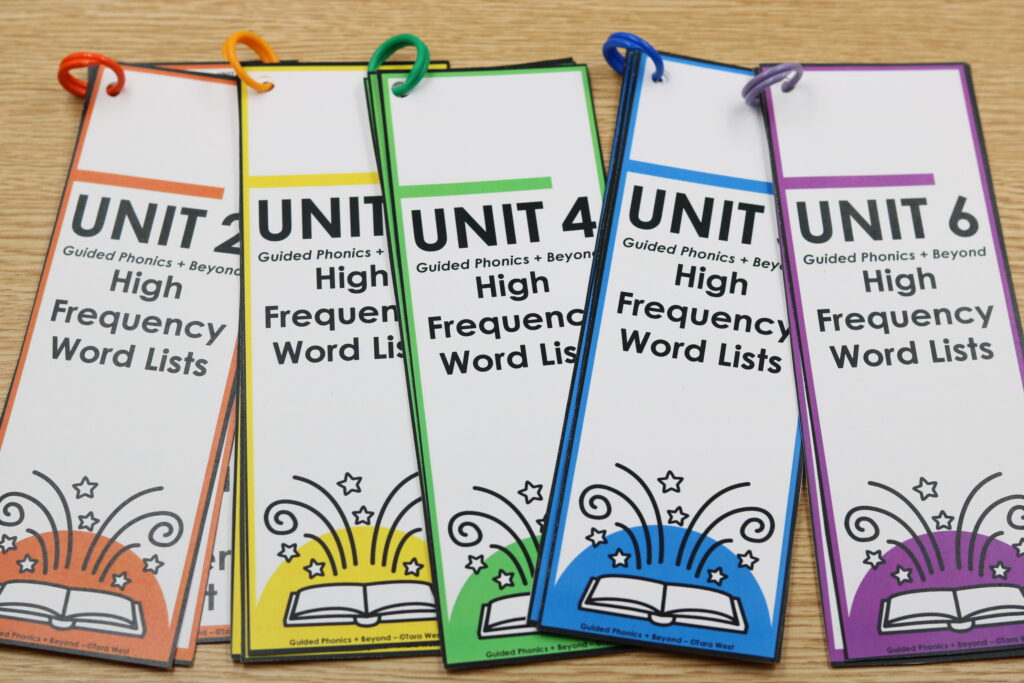
Understanding the Science of Reading
The science of reading is rooted in research-backed methodologies that explore the cognitive processes involved in reading. It recognizes the significance of phonics, fluency, vocabulary, and comprehension in developing proficient readers. By aligning instructional practices with scientific findings, educators can enhance the effectiveness of reading instruction.
Connecting Phonemes to Graphemes Through Word Mapping
One common challenge I observe among teachers in high-frequency word instruction is the overwhelming number of words they feel compelled to cover in a school year. I understand this struggle because I once shared the same concern. However, delving into the science of reading reveals that high-frequency word instruction isn’t about having students memorize an extensive list of 50, 75, or 100 words each year. Instead, the focus shifts to mastering fundamental sounds.
Once students grasp these foundational sounds, they are better equipped to approach high-frequency words without relying solely on memorization. Take a moment to consider the two words presented below. Would you expect your students to memorize the word “sad” and recall it instantly? Most likely not. It’s more probable that you would encourage your students to stretch the word sound-by-sound: /s/, /a/, /d/. The same principle applies to the next word, “said.” Notice the repeated /s/ and /d/. The only aspect requiring memorization is the /e/ represented by the letters ‘ai’. We call this the heart sound.
Connecting phonemes to graphemes through word mapping is a strategy used to help learners understand and remember high-frequency words by visually representing their spelling patterns and structures. Here’s a step-by-step guide on how to map high-frequency words:
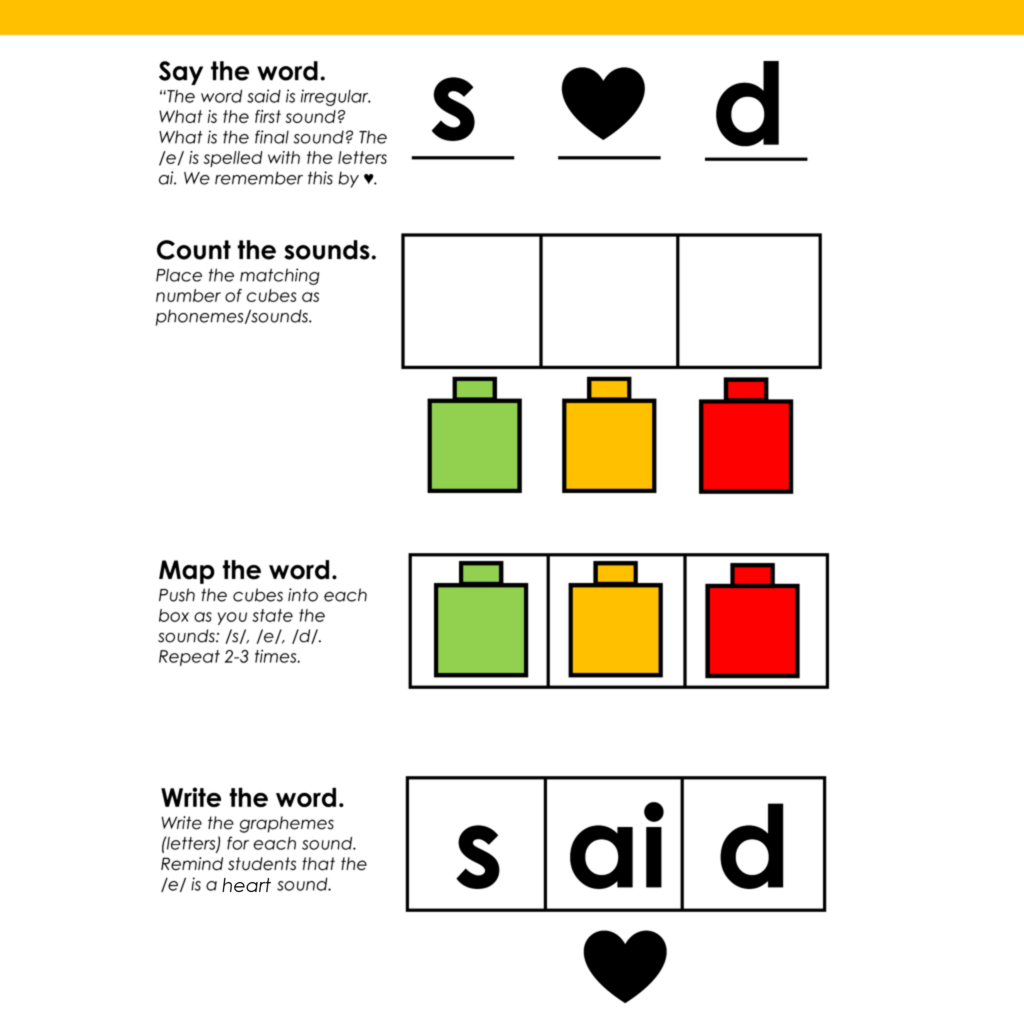
By mapping high-frequency words, learners can develop a deeper understanding of spelling patterns, enhance their recognition and retention of words, and ultimately strengthen their overall literacy skills.
Explore a thorough compilation list of high-frequency words categorized based on phonics skills provided below.
The Role of High-Frequency Words: Hands-On and Engaging Activities
High-frequency words are words that appear frequently in written texts and often do not follow regular phonetic patterns. Teaching these words as high frequency words, where students recognize them instantly without relying on phonetic decoding, is a key component of a comprehensive literacy curriculum. These words, often encountered in early reading materials, play a pivotal role in promoting reading fluency and comprehension.
Continue reading to discover ways in which you can incorporate high-frequency words into your teaching, seamlessly integrating them into both your instructional methods and independent literacy centers through the use of the featured 5 FREE hands-on and engaging activities.
- Building Reading Fluency: High-frequency words are encountered repeatedly in various texts, making them integral to fluent reading. When students can quickly recognize and read these words by sight, it contributes to smoother and more effortless reading. Fluency, in turn, is closely linked to comprehension, as the ability to read with ease allows students to focus on understanding the content.
- Enhancing Vocabulary: Many high-frequency words are commonly used and form the basis of everyday language. Teaching these words helps expand a child’s vocabulary, enabling them to comprehend a broader range of texts. A strong vocabulary is a key predictor of overall reading success.
- Supporting Early Reading Success: High-frequency words often appear in early reading materials, and mastering them early on provides learners with a sense of accomplishment. This early success contributes to building confidence and motivation, fostering a positive attitude towards reading.
- Complementing Phonics Instruction: While phonics instruction is crucial for decoding unfamiliar words, high-frequency words may not always follow typical phonetic patterns. Integrating both phonics and high frequency word instruction provides a balanced approach, equipping students with the tools needed to tackle various words encountered in texts.
Understanding Irregular High-Frequency Words and Their Impact on Early Literacy
Irregular high-frequency words, often referred to as sight words or non-decodable words, are words that don’t follow typical phonetic patterns or spelling rules in the English language. Unlike regular words that can be decoded using common phonetic principles, irregular high-frequency words contain parts that must be memorized by sight because their pronunciation and spelling don’t conform to the expected rules. These words often occur frequently in written text, making them essential for early readers to recognize on sight in order to enhance their reading fluency. Examples of irregular high-frequency words include common words like “said,” “was,” “kind,” and “does.” Educators and literacy programs emphasize the importance of explicitly teaching these irregular high-frequency words to support reading proficiency. Mastery of these words contributes significantly to a reader’s ability to comprehend and process written language efficiently.
Do you find yourself uncertain about which high-frequency words to teach, how to categorize them based on phonics skills, or which words fall under the irregular category? No worries – I’ve got you covered with our highlighted free download: high-frequency word lists. This downloadable resource gives you access to meticulously curated lists of 260 high-frequency words, thoughtfully organized for your convenience.
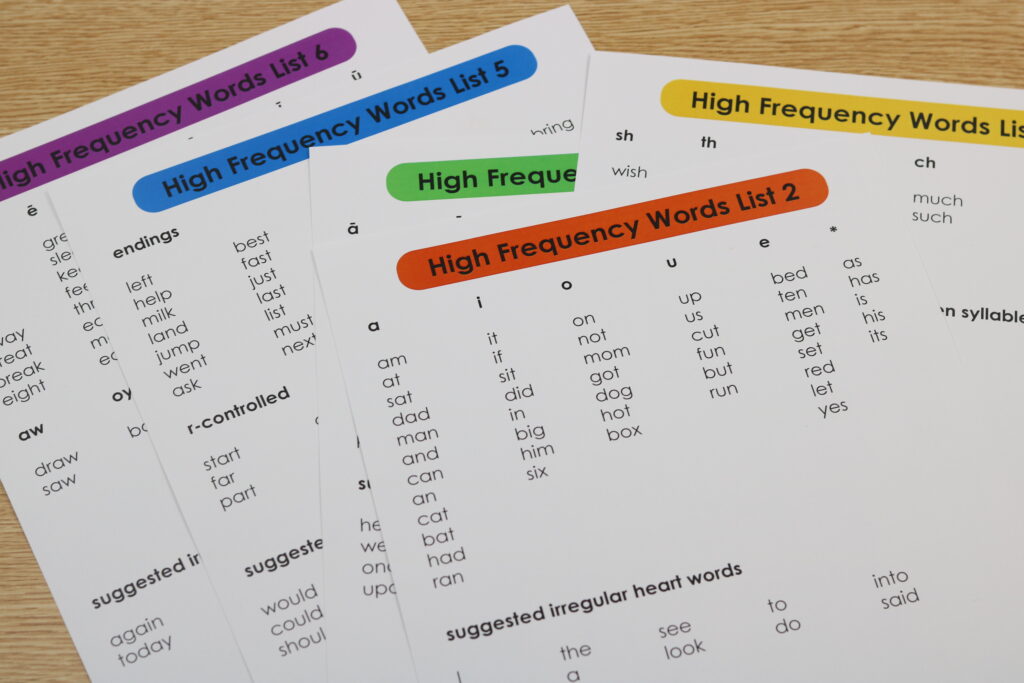
These lists provide pacing suggestions for both phonics-based words and irregular words. It’s important to view them as guides, allowing flexibility for adjustments as necessary. The classification of irregular words may vary, and as the educator, you have the discretion to make adaptations based on your teaching approach and the needs of your students.
Bonus Digital Free Download
Access this free set of digital high frequency words slides. The heart/irregular words are noted with a heart on each slide to provide direct instruction. Utilize the PDF set or the Google Slides version.
A Guide for Parents on Navigating Irregular High-Frequency Words with Your Child
Are you looking for assistance in conveying to parents and guardians the significance of understanding the structure and approach to teaching high-frequency/irregular words, rather than just memorizing them? Explore the example parent note provided below.
Dear Parent/Guardian,
I understand that the concept of high frequency words is often discussed in early education, and there may be concerns about the idea of memorizing these words. Let me explain why the emphasis is not on memorization but on developing a deeper understanding and recognition of words.
- Building a Strong Foundation: Memorization implies rote learning without understanding. However, the goal in early reading instruction is to build a strong foundation in language. Instead of mere memorization, educators aim to help children understand the structure and meaning of words. This understanding fosters a more profound connection to language.
- Encouraging Word Decoding Skills: Relying solely on memorization may not equip children with effective word decoding skills. Understanding the relationships between letters and sounds (phonics) is crucial for reading unfamiliar words. A balanced approach that combines high frequency word recognition with phonics instruction ensures a more versatile set of skills for tackling various words encountered in texts.
- Facilitating Transferable Skills: Memorized words might not be easily transferable to new contexts or unfamiliar words. Teaching children to recognize patterns and decode words based on phonetic principles empowers them to apply their skills to a broader range of words. This transferability is essential for independent reading and lifelong learning.
- Promoting Reading Comprehension: Reading is not just about recognizing words; it’s about understanding the meaning of the text. Focusing on comprehension involves a deeper engagement with the content. By understanding the structure and meaning of words, children are better equipped to comprehend the material they are reading.
- Supporting Critical Thinking: A high frequency word approach based on memorization might not encourage critical thinking skills. Understanding the mechanics of words and language allows children to engage with texts critically, asking questions and making connections. This intellectual engagement is crucial for developing lifelong learners.
In essence, the emphasis is on developing a holistic approach to reading that includes high frequency word recognition but goes beyond mere memorization. By fostering a deeper understanding of language and providing a toolbox of skills that includes phonics and word decoding, educators aim to empower children to become confident, independent readers who can tackle a wide range of texts.
If you have any specific concerns or questions, please feel free to discuss them further. Your involvement in your child’s education is highly valued, and we are here to support their learning journey.
Sincerely,
A Conclusion: Science of Reading and High-Frequency Words for Lifelong Literacy Triumph
In the journey towards literacy, the science of reading serves as a guiding beacon, emphasizing evidence-based practices for effective instruction. Integrating high-frequency words into the curriculum is not just a pedagogical choice; it’s a strategic investment in building strong reading foundations. By understanding the science behind reading and prioritizing the teaching of high frequency words, educators empower students to become confident, fluent, and proficient readers, setting them on a path to lifelong literacy success.
Access the 5 FREE High Frequency Word Resources
I’m thrilled to present these 5 FREE resources on high-frequency words. This free bundle encompasses five packets spanning over 775 pages. Dive into high-frequency word lists, magnet builders, bingo board sets, read and search pages, as well as sort, cut, paste sheets and read-write sheets. Click below to instantly download this valuable free bundle.
This free download is a zipped file. Zipped files do not download on phones or ipads unless you use the free izip app. I would email yourself the blog post and open it on a computer.
Thanks so much for downloading the free high frequency words resources. Reach out with any questions.
Tara West – Little Minds at Work
littlemindsatworkLLC(at)gmail.com

